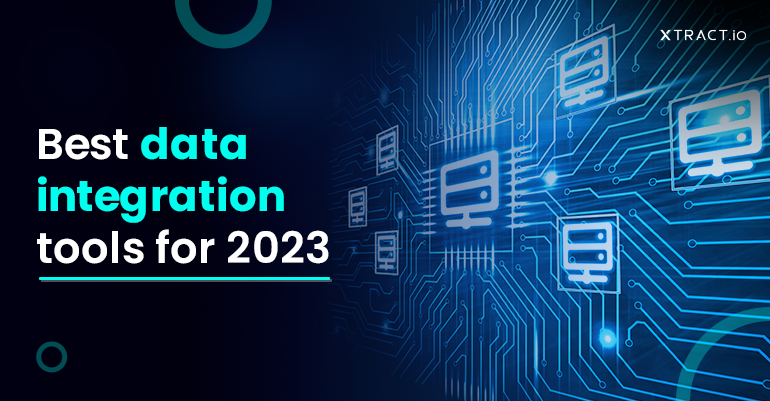The telecom industry has witnessed spectacular growth since its establishment in the 1830s. Enabling distant communications, collaborations, and transactions globally, telecommunication plays a significant role in making our lives more convenient and easier.
With enhanced flexibility and advanced communication methods, the telecom industry gains more customers and creates new revenue streams.
According to Grand View Research, the global telecom market size would expand at a compound annual growth rate (CAGR) of 5.4% between 2021-2028.
With the rapidly growing digital connectivity, the communication service providers (CSPs) have to deal with large datasets. Datasets that can allow them better to understand their customers, competitors, industry trends and derive valuable insights for decision making.
To examine these unstructured datasets and extract actionable insights from the data, communication service providers can lean on data analytics. But, before we jump into the details, let’s start with the basics of Data Analytics.
What is data analytics, and why is it important?
Data analytics, simply put, is the process of analyzing, monitoring, and interpreting huge data collected from various unstructured sources. It helps businesses unearth data to make significant business decisions quickly.
With efficient data analytics, organizations can analyze their overall performance, identify gaps, discover current trends to stay ahead of the competition.
Role of data analytics in the telecom industry
The telecom industry faces several business challenges, just like any other industry. Here, data analytics helps identify and extract useful information from datasets and enables companies to make critical business decisions.
Let’s look at the use cases of data analytics in the telecom industry.
1. Network optimization
The rapid rise in today’s network demands prompts the communication service providers to monitor and manage network capacity for prioritizing and planning network expansion strategies.
Network management can be improved by analyzing issues related to network congestion- service consumption, utilization, and more.
With real-time data insights, the telecom service providers can determine network traffic value that facilitates targeting specific investments, tailoring good services or applications, and optimizing commercial bandwidth value.
Data analytics can help measure and analyze KPIs, providing seamless network orchestration and self-optimization. It can detect anomalies and ensure that the network systems execute in a secure, reliable, and efficient manner.
Furthermore, it ensures a threat-free performance state and provides end-to-end visibility of the entire network.
2. Efficient marketing
Mass marketing is no longer effective as each customer’s requirements are unique and ever-changing. Thus, the telecom industry needs to identify prospective customers and tailor services accordingly.
Based on different service usage analyses, data analytics can help understand how people react to various products and services. A detailed analysis of purchase history, service preferences, billing data, location data, and customer feedback enables customized product offering to target the right audience at the right time.
This way, they can develop personalized offers and advertising deals for customers, maintain competitive advantage, continue steady development, and improve conversion rates.
3. Predictive churn analysis
Detailed predictive analytics on data collected from various devices can help the telecom industry forecast traffic patterns, make smarter investment decisions, and enable smooth network operations.
The real-time data insights can help improve these operations to continuously monitor and manage any drop in service performance, model network behavior, and map future demand.
It helps understand customer preferences and identify issues like churn risk by accurately analyzing millions of network usage patterns and hundreds of data points. According to Mckinsey & Company, advanced data analytics can help the telecom industry predict and reduce customer churn by 15%.
Therefore, the telecom service providers can reliably detect patterns in consumer needs, allowing them to adjust their services as needed, resulting in a better customer experience.
4. Price optimization
The increasing neck-to-neck competition in gaining more subscribers or users creates a substantial need for telecom companies to set optimal prices for their products and services.
Data analytics helps the industry gain accurate data insights and create optimal pricing strategies to make proactive decisions by analyzing customers’ reactions to different pricing strategies, purchase history, and competitor pricing.
In addition, the telecom service providers can analyze the profitability of specific price points, identify the perceived value of their product or services, maximize their ROI, and improve the effectiveness of their salesforce.
Optimizing the pricing strategy based on revenue and profitability can boost sales and profit, help gain more customers, and most importantly, retain loyal customers.
5. Enhance network security
Protecting the authenticity and confidentiality of networks is a primary concern for the telecom industry to maintain users’ trust as it has access to huge amounts of highly sensitive data.
According to a Deloitte survey, security concerns are the main reason why most people do not use mobile payments.
With real-time analysis of network traffic data and customer behavior, the telecom service providers can detect patterns that indicate a potential attack, identify abnormalities, discover security threats, and understand where vulnerabilities exist.
Data analytics helps identify inconsistencies in networks by monitoring tons of current and historical data. It prevents unauthorized access and customer information misuse, thereby shielding networks from cyber attacks.
By unearthing the hidden risks and security threats, the telecom industry can prevent cyber attacks and strengthen network security.
Get a customized data analytics solution from Xtract.io
An in-depth data analysis provides detailed insights to understand large-scale data better and helps businesses develop precise business strategies.
Xtract’s Business Intelligence and Analytics can help improve your operational efficiency by building tailored solutions, increasing customer experience. Our solution helps transform unstructured data into actionable insights, enables data-driven decision-making, and assists you in staying ahead of the competition.
Are you interested to know more? Request a demo here and check out how it works.







